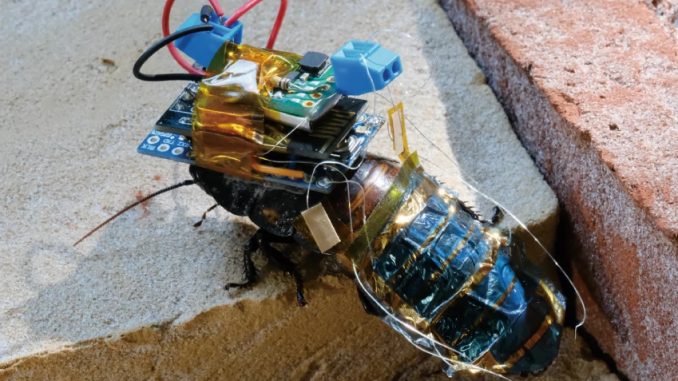
Cockroaches are deemed as pests around the world, but these Avengers scavengers are proving that not all roaches are created equal.
For the past decade, real Madagascar hissing cockroaches have been equipped with little backpacks that scientists will be able to remote-control—thus turning them into cyborgs.
Where their pesky cousins strike fear, these six-legged critters provide calm; the hope is that they’d one day be able to help monitor environments or assist in search and rescue missions.
Their backpacks are used to carry batteries to power their travels, but those tend to drain out. Considering how these roaches would need to navigate disaster-struck zones, this isn’t ideal. Now, an international team of researchers at RIKEN has made it easier for the controversial, finger-sized antiheroes to get through miles and miles of rubble by making the backpacks solar-powered.
Explaining in a new study published in the journal, the team notes how it’s been able to remote-control the legs of real cockroaches through this extremely lightweight, 3D-printed backpack that’s connected to the bugs’ nervous system.
The rechargeable solar cell is flexible and attached to the cockroach’s thorax. Pressing a button shocks the backpack to maneuver the insect in specific directions. Even though this device is ultrathin, it can deliver 50 times the power output of “current state-of-the-art energy harvesting devices on living insects,” says researcher Kenjiro Fukuda.
One problem: Strapping the backpack to the cockroach’s abdomen, in the same way humans carry the bags on their backs, restricts its movement. The abdomen is where cockroaches get their ability to contort or turn themselves over, and adding a backpack to it would impede this.

Image via Kakei et al / npj Flexible Electronics (Open Access)
As such, the team experimented on a series of thin electronic films, before finally settling on a version 17 times slimmer than a human hair. This stuck onto the roaches without significantly hindering their movements. Plus, the backpacks stayed on for about a month, which was the longest amount of time they remained on insects.
The critters were then wirelessly controlled and moved according to where the researchers wanted them to go. As for whether the system hurt the roaches, Fukuda claims (via ), “according to research related to insects, cockroaches do not experience pain.”
Cockroach paramedics, however, are still a little ways down the road. The roaches are only powered by wireless locomotives, and would require more equipment like sensors and cameras to join urban rescue missions. The current design of the backpacks means only very low-res cameras could be used.
Also, for the majority who are still squeamish about roaches, fret not—the team says insects like beetles and cicadas are great candidates for such operations, should they be possible in the future.
[via
http://www.designtaxi.com/news/420256/Cyborg-Cockroaches-With-Backpacks-Could-One-Day-Provide-Aid-In-Disaster-Zones/

Leave a Reply